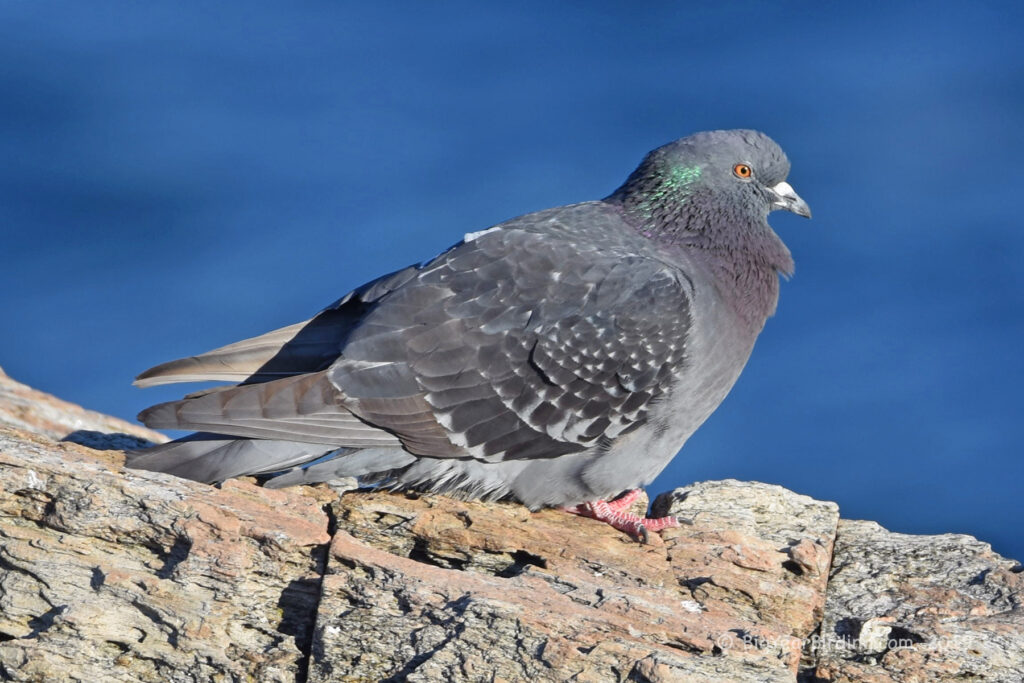
The Rock Pigeon, also known as the common pigeon or city pigeon, is a bird species found throughout the world, including North America, Europe, Asia, Africa, and Australia. They are typically about 11-13 inches (28-33 cm) in length and weigh around 9-13 ounces (250-370 grams). They have a plump body, short neck, and small head, with a wingspan of about 20-26 inches (50-66 cm).
One of the most distinguishing field marks of the Rock Pigeon is its iridescent feathers, which can appear blue, green, or purple, depending on the light. They also have a distinctive white rump and two black bands on their wings. In flight, their wings make a distinct whistling sound due to the shape of their feathers.

Rock Pigeons are non-migratory birds and can be found year-round in their range. However, they are known to be highly adaptable and are often found in urban areas, where they have become a common sight in parks, plazas, and other public spaces. They build their nests in sheltered locations, such as ledges, eaves, and crevices in buildings.
While Rock Pigeons are often considered a nuisance by some people, they have played an important role in human history. They were domesticated more than 5,000 years ago and have been used as a source of food, as well as messengers during wars. Today, they are still used in racing and other forms of competitive flying.
Overall, the Rock Pigeon is a familiar and adaptable bird that can be found in a wide range of habitats. Their iridescent feathers and distinct markings make them easy to identify, and their ability to thrive in urban areas has made them a common sight in many cities around the world.
